How to Grow an Apple Tree: 10 Simple Steps
-
Pete Ortiz
- Last updated:

There’s nothing quite like biting into a ripe apple early in the morning! Originally from Central Asia, apples are one of the most widely cultivated fruits on the planet. They are very nutritious and come with a wide range of health benefits. You can cook, fry, or eat them raw. So, why not grow your own apple tree? This way, you’ll always get the sweetest and healthiest apples!
You don’t need to be a scientist, biologist, or seasoned farmer for that. Apple trees are rough, tough, and can grow in a cold climate. Join us, and let’s learn how to grow an apple tree! We’ll start by picking the right species, finding the perfect spot, fertilizing the soil, and go from there.
| Botanical Name | Malus domestica |
| Soil Type | Well-drained, fertile, loamy, sandy, medium-clay |
| Soil PH | 5.8–6.5 (slightly acidic) |
| Sun Exposure | Full sun (8 hours a day) |
| Watering Requirements | Low/moderate (1 inch a week) |
| Temperature | 40º Fahrenheit and higher |
| Hardiness Zone | 3–8 USDA |
| Days to harvest | 2–8 years from planting |
 Before you Begin: Picking the Right Apple Species
Before you Begin: Picking the Right Apple Species
Apples belong to the Malus genus, which includes 30–55 different species. The general name for apple trees is Malus domestica. As for the cultivars, there are 7.5K+ species of apples on planet Earth! So, which one(s) will be best for your garden? Well, this will be greatly determined by two factors: how much space you have and where you live. Most of us do not have acres of land to grow trees on.
That’s why dwarf apple tree species are so popular in America. With an average height of 10–15 feet, they reach the bearing age faster than their “big brothers”. Next, you need to check your area’s hardiness zone. The lower it is, the colder the average temperature will be. Most apples flourish in USDA zones 3–8 and survive at 40 degrees F. So before you buy the seeds/rootstock, make sure they will tolerate the local climate.
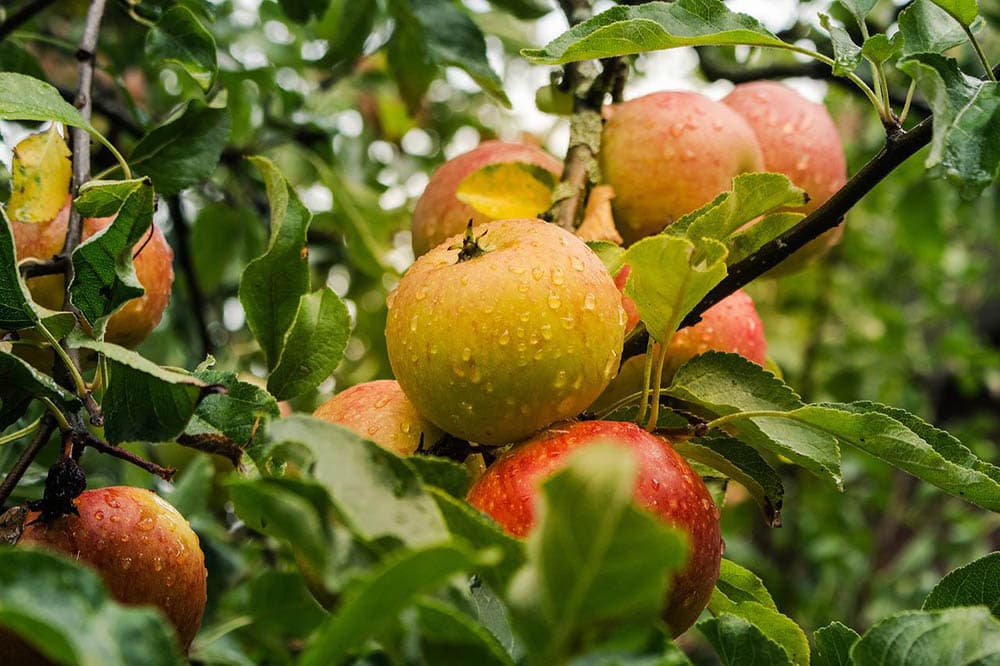
The 10 Simple Steps on How to Grow an Apple Tree
1. Find a Spot for the Trees
An apple tree needs full exposure to the sun during the day to grow and thrive. Ideally, it should get up to 10 hours of direct sunlight; 6–8 hours will be enough as well. Now, that doesn’t mean you can’t grow apples if you live in a shady area. However, when the fruits don’t get enough sun, their taste leaves a lot to be desired. The texture will also be affected.
So, what happens when the tree gets very little exposure to the sun? In that case, you might not see any apples at all! That’s exactly why it’s so important to find the right spot in your garden that gets at least 5–6 hours of sun during the day. Otherwise, you’ll be disappointed by the result. The tree itself will grow, but it won’t bear any fruit.
2. Get Everything Ready
Before you do any planting, make sure the area is clean. Debris won’t require much effort to clear. Weeds, in turn, might take a bit more time to handle. Next, take a moment to check the soil. Most likely, it’s not ideal for planting apples, and you’ll have to introduce some changes. Of course, a fertilizer product can help with the growth, but don’t use too much of it. We’ll talk about the soil in more detail in a moment.
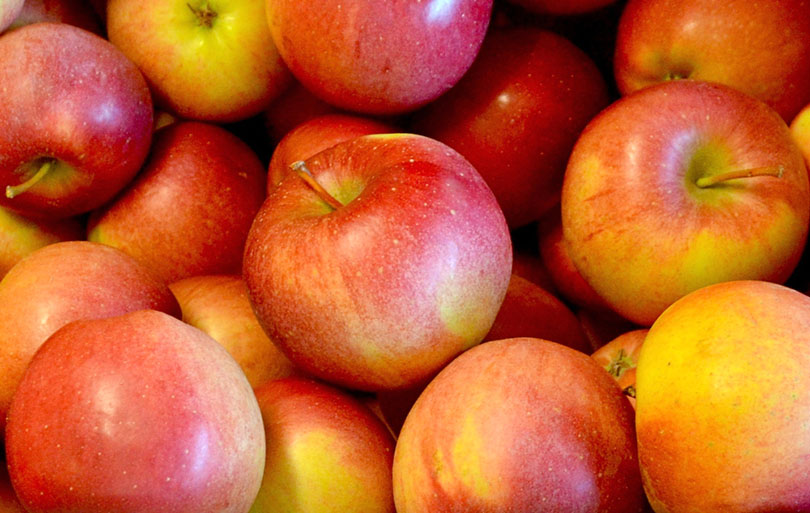
3. Buy the Seeds/Rootstock
Alright, so should you invest in apple seeds and get your apple garden started that way? Yes, you could do that, but then you’ll have to wait for 8–10 years before the trees mature and produce fruit, and most gardeners aren’t ready for a commitment that long. Thankfully, there’s always the option of buying rootstock.
For example, a dwarf tree rootstock only needs 2–3 years to grow delicious apples. A standard tree, in turn, will take up to 8 years; the same is true for seedlings. Don’t rush it: take a moment to learn about each seed, seedling, and rootstock available at your local nursery or garden center.
4. What About the Soil and Mulch?
Loamy, sandy, and well-drained soil is what you should go for to ensure steady growth. Apple trees also prefer the soil to be fertile. As for the acidity, we recommend a neutral pH of 5.8–7.0. And if you don’t want to get into the ins and outs of picking the perfect mix of sand, clay, and different chemical compounds, do order a soil test. This won’t cost a pretty penny, by the way.
First, the test will help get the right proportions. Second, it will tell you exactly how much fertilizer and mulch you need and which elements/nutrients are missing from the soil. Third, you’ll get detailed, step-by-step instructions on how to perfect the soil, get more produce, and ensure a longer lifespan for the tree. Speaking of mulch, it helps keep soil temps up and conserves moisture. Add it before the first frost.
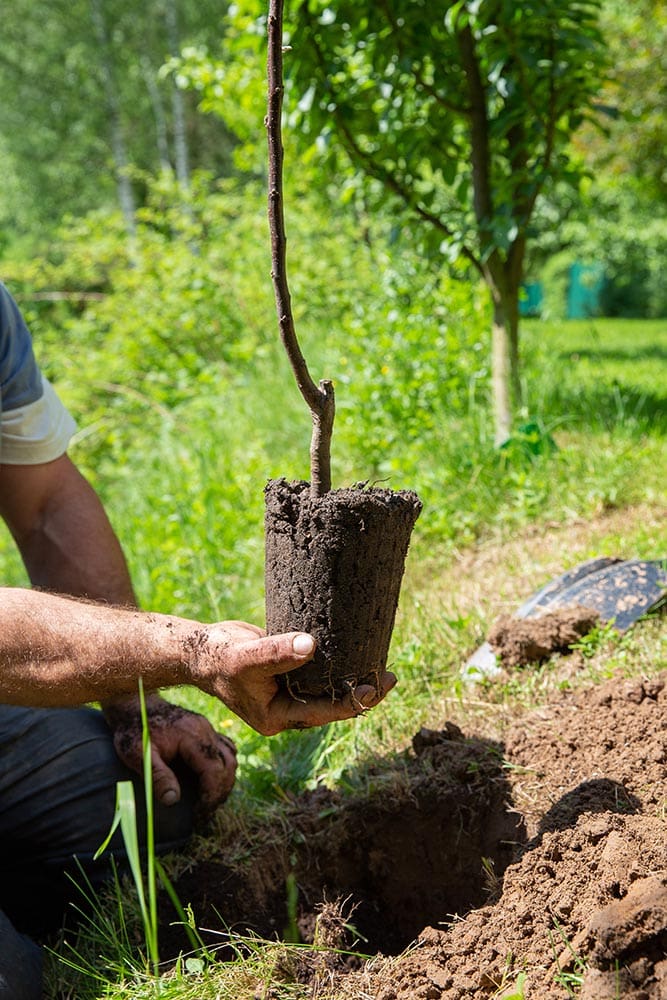
5. Get to Planting the Stock
Okay, now that you’ve found a sunny spot in your garden, got rid of the debris/weeds, and prepared the soil, it’s time to plant the rootstock. The soil needs to be loose and the hole at least two times larger than the root system. See that it’s 2–3-feet deep so that the roots have enough space to “settle in”. It’s very important not to leave any air pockets out.
Do your best to cover every single pocket with soil. The graft union is recommended to be 2–3 inches above the topsoil to ensure proper growth. Are you planting an apple tree from a container? Then the roots (or, rather, the root ball) are probably all dry. Put it in a bucket full of water for a day to get it ready for planting.
6. Give Each Tree Some “Breathing Room”
At this stage, the rootstock is very tiny, but once it grows, it will need space to spread its branches. Therefore, see that there’s enough distance between each tree. That’s going to be 15–20 feet for standard apple trees and 4–8 feet if you’re growing dwarfs instead. This means you can plant up to three dwarf trees instead of one big tree!
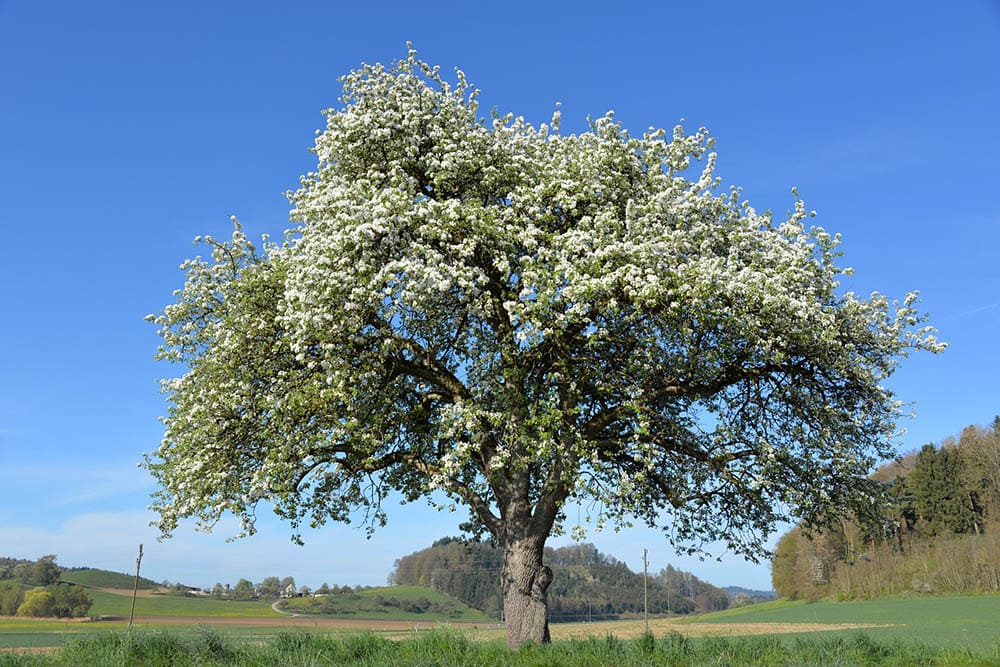
7. Watering Comes Next
Regular, moderate watering is the key to success with apple trees. When the soil is well-drained and moist, rapid growth is guaranteed. At the same time, overwatering usually results in root rot, something that’s very hard to fight once the damage is done. As soon as the roots are planted, water them and give the water some time to absorb before adding some more. For most trees, one inch of water per week is adequate.
8. Pruning and Pest Control
When the tree is still growing, be very careful with pruning. Only cut the branches that you’re 100% sure are dead or broken. Regular pruning improves air circulation, helping the tree fight off pests and diseases. Speaking of infections, apple trees are constantly attacked by maggots, moths, and even fungal diseases. Fire blight can also be an issue.
To keep the tree healthy, we recommend using pesticide products. Do this at least once a year. Also, don’t forget about companion planting. Most apple trees rely heavily on cross-pollination (from different varieties) to produce fruit. Can’t seem to attract pollinators like bees, flies, and birds? Then plant at least a dozen of different aromatic flowers near the apple trees.
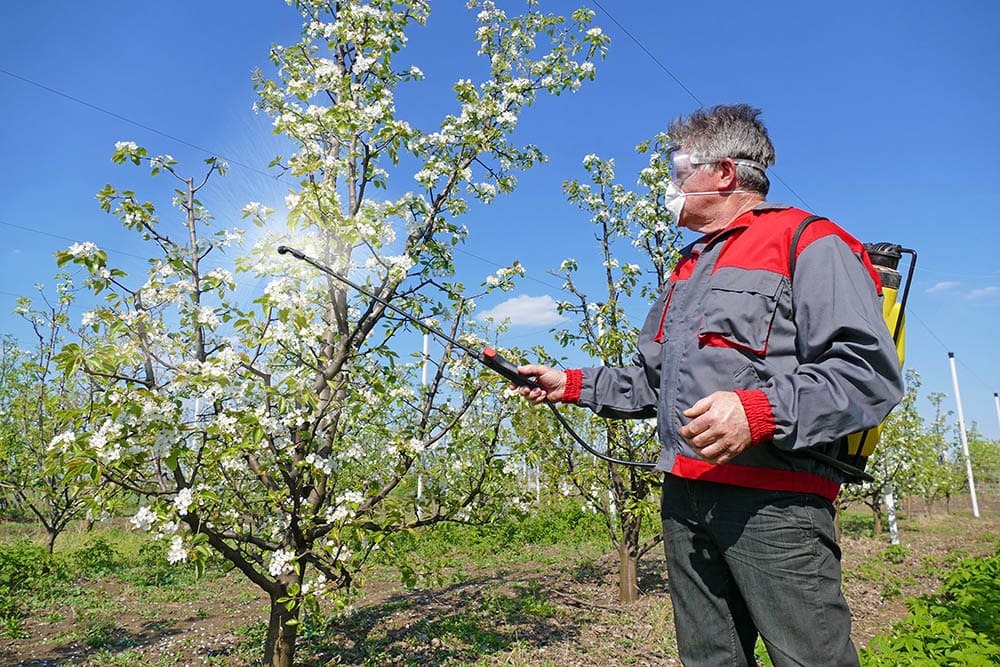
9. Posts and Trellises
The branches of mature apple trees tend to get quite heavy. And, oftentimes, they’ll require support like a post or a trellis. Otherwise, some of the branches will break. Essentially, all you’ll need is some hardwood and basic carpeting skills. Or you can get a post or a trellis at your closest home improvement store. Also, apple trees greatly benefit from the so-called central leader system.
It’s when you only have one main trunk while the branches are growing at an angle to support it.
10. Harvesting Apple Trees
When is the best time to finally harvest the delicious apple fruit? This depends on the species. Some apples are ready to be picked in late summer. Other varieties only become ripe in early September or even as late as mid-November. Keep your eyes on the color of the apples. The deeper it is, the tastier the fruit will be. And one more thing: never use a knife to cut apples from the stems.
Instead, twist and gently pull. If you meet resistance, that means it’s not yet the time to harvest.

 What’s the Average Lifespan?
What’s the Average Lifespan?
A standard apple tree lasts for 50 years. Certain species can go on for 100, or even 150 years! Dwarf trees, in contrast, have a much shorter lifespan (20–25 years), but, again, that’s compensated by rapid growth. As we learned earlier, when sowing seeds instead of using a rootstock, it will take around a decade for you to see the first apples. Well, while that is, indeed, a long time, you will still have 40 years to enjoy the fruits!
Health Benefits
Very few fruits are as nutritious as apples. Rich in vitamins, antioxidants, minerals, and fiber, they help our bodies fight off cancer, Alzheimer’s, heart diseases, diabetes, and various chronic conditions. On top of that, they “boost” the immune system and help lose weight. And if you grow your own apples, you can be 100% sure that they won’t be contaminated in any way and will, indeed, include lots of vitamins and minerals.
To get the most out of apples, don’t throw away the peels because they contain 60% of the fibers. A big percentage of the antioxidants are also found in the peels. And don’t worry; washing the apples in cold water will remove all the pesticides from the surface. A medium-sized apple has only 80 calories, no fat, and up to three grams of fiber. Thanks to the low glycemic load, you’ll feel full after eating one single fruit.
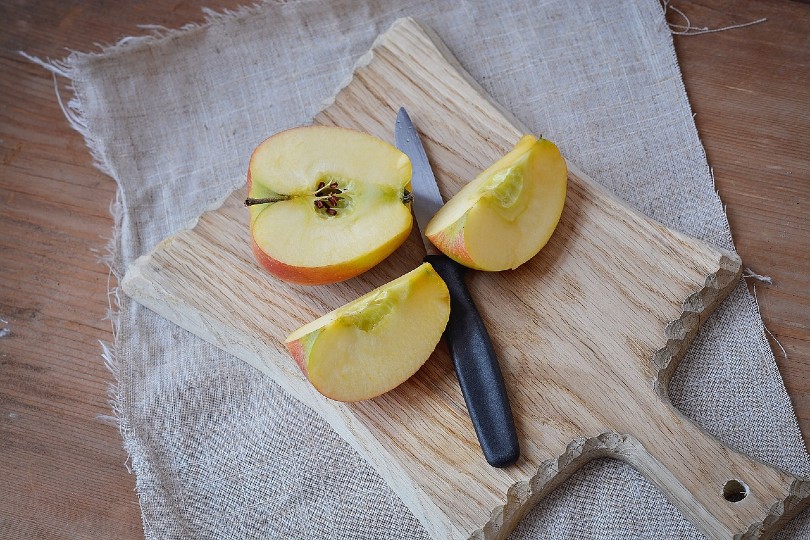
Are there any Downsides?
We’ve all heard the expression “an apple a day keeps the dentist away”. But is that really true? Are apples good for your teeth? Well, that’s a gray area. While this fruit is, indeed, great at cleaning your teeth and ensuring a fresh breath, it can have a negative long-term effect, much like sweets and sugar-heavy drinks (soda, for example). Over the last decade, the level of sugar in apples has risen by 50%.
Next, don’t eat the seeds. At least, make sure you’re not consuming them on an “industrial scale”. If you only eat one or two, the amygdalin in those seeds won’t be nearly enough to hurt you. And one more thing: chewing an apple does dramatically reduce the bacteria population in the mouth, as the fruit serves as a toothbrush. However, it may also stimulate plague regrowth for approximately 24 hours after you eat it.
Can I Feed Apples to My Pets?
Yes, you most certainly can, and the effects will be very similar to those on humans. For example, eating an apple will help against bad breath. However, it’s NOT recommended to feed a dog or a cat the seeds, as that can lead to panting, difficulty breathing, and shock. The same is true for the core, the stems, and the leaves. On the bright side, all the vitamins and minerals will do an excellent job of strengthening your pet’s body.
Apples are low-calorie fruit with high levels of fiber, and that’s great news for any furry animal’s health. We do have to warn you, though, that one big apple a day will contain too much sugar for a pet. So, feed it to them in tiny slices. In summary, while apples are a healthy snack, and some cats and dogs do enjoy them, they’re not a vital part of their daily ration.
 Conclusion
Conclusion
Do you like the taste of fresh fruits? Or maybe you’re looking for a nutritious, low-calorie snack? Wait: you just want an easy-to-grow fruit for your yard. If the answer is yes to any of these questions, an apple tree will be right up your alley. When properly taken care of, it will live for over 50 years, providing you with 100% GMO-free, organic apples.
Now, while each planting experience is different, if you stick to the tips and tricks from our guide, it will be much easier to master the art of growing an apple. Plant the rootstock in fertile soil and in a location that gets lots of sunlight, water it frequently, and sweet apples will follow!
- WebMD – The Health Benefits of Apples
- An Apple a Day Does NOT Keep the Dentist Away
- AN APPLE A DAY KEEPS THE… DENTIST AWAY?
- Effect of chewing an apple on dental plaque removal
- Can Dogs Eat Apples? How to Safely Feed Apples to Dogs
- Can Dogs Eat Apples?
- Purina – Can Cats Eat Apples?
- How to Grow Apple Trees at Home: Apple Tree Planting Guide
- UMN – Growing apples in the home garden
- Leaf Network – Tree Life Span
- USDA Plant Hardiness Zone Map
- PSE – Don’t Guess… Soil Test
- Do Apple Trees Need Full Sun?
- Fruit Tree Pruning and Fruit Tree Care
- S. Forest Service – Pollinators
- Central leader and modified central leader
- Wikihow – How to Grow an Apple Tree
- How to Grow Apple Trees in 10 EASY Steps
Featured Image Credit: Hans, Pixabay
Contents

 Before you Begin: Picking the Right Apple Species
Before you Begin: Picking the Right Apple Species What’s the Average Lifespan?
What’s the Average Lifespan?